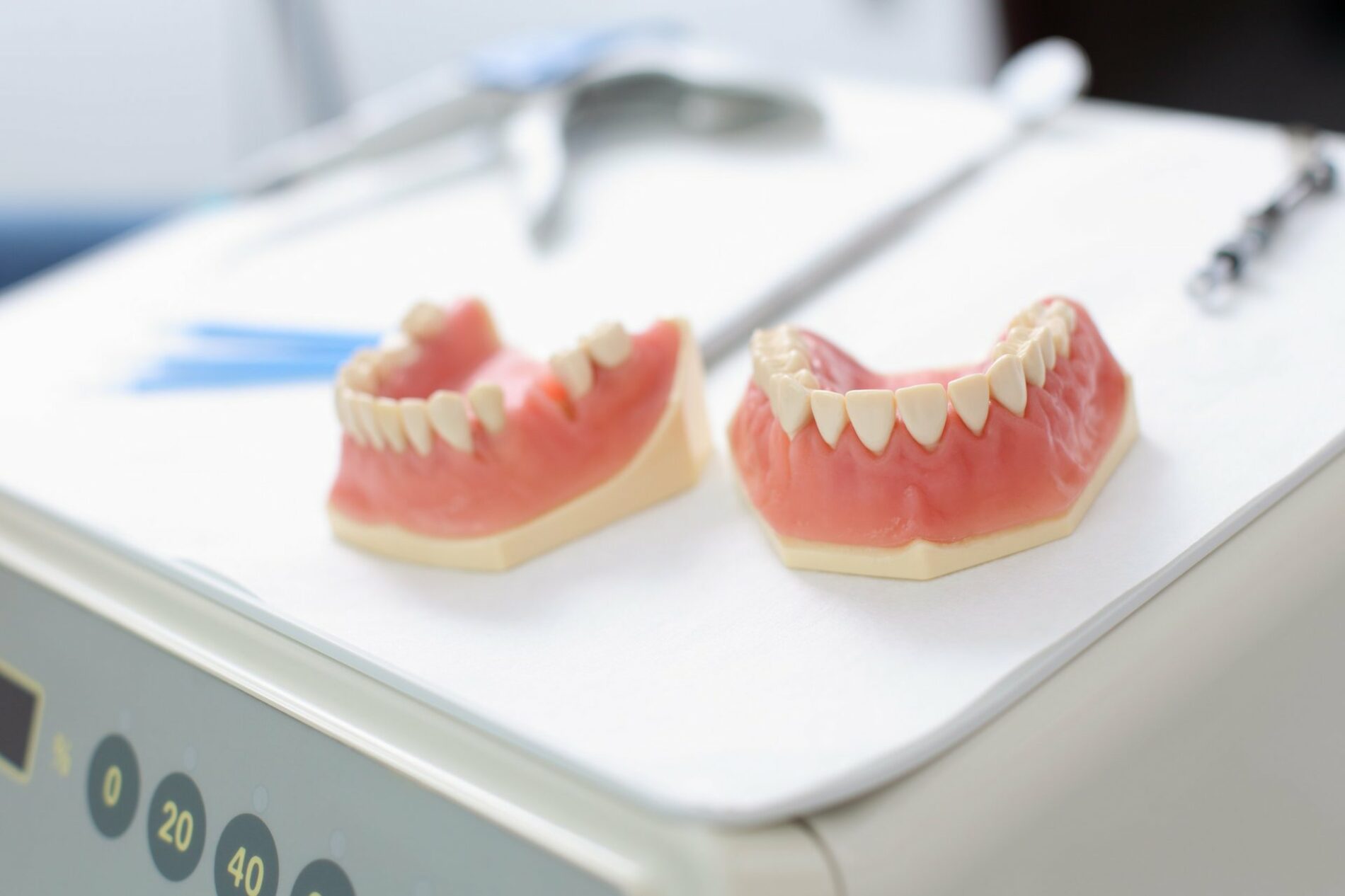Your dentist will likely aid you in the decision-making process by giving you his or her recommendation, but the final decision will be left up to you.
Two options that may be appropriate to replace your missing teeth are dentures and dental implants. Here is a bit of information about each application to aid you as you make your selection.
Traditional Dentures
Traditional dentures have been used for years to replace missing teeth, especially among people of advanced age. By the time many adults become seniors, a significant number will likely wear dentures.
The number of seniors with missing teeth outnumbers those with all their teeth by a ratio of two to one. Ninety percent of people with no teeth at all or no teeth in a single palate have dentures.
A denture is a removable set of false teeth that is designed to fit the specific contours of your mouth. If a traditional denture is used, the device is typically held in place by natural suction and dental adhesive.
People who wear a denture usually remove their appliance at bedtime to allow the device to soak in a cleaning solution overnight. Many people like having the ability to remove the false teeth and put them back into place as needed.
Still, denture wearers should understand that dentures can cause the jaws to become weaker and thinner. The jaw relies on stimulation from the teeth to remain strong and thick. With no implants or natural teeth to transfer supportive pressure to the bone, it begins to atrophy.
Comfort
A traditional denture may be uncomfortable at times due to the device’s movement. Slipping may occur as you eat or speak with the appliance in place. Dental adhesive can help keep a denture in position, but the device may still move occasionally.
A denture can be affixed to dental implants for stabilization. A denture that is stabilized by a dental implant is called an overdenture. An overdenture can replace a full palate of teeth to help you avoid the uncomfortable shifting associated with a traditional denture.
Longevity
Dentures usually last between five and eight years. As a result, if you choose this option, you may be required to replace your appliance at least once.
Dental Implants
Dental implants are titanium rods or posts that replace the roots of missing teeth. Like natural dental roots, dental implants integrate with the bone of the jaw.
After your dentist places your implant, the cells of the jawbone grow around the titanium post, securing it in place. The integration process usually takes a few months. However, once it is complete, the implant can withstand the normal pressures associated with chewing and biting.
If a dental implant is used to replace only one tooth, the device is covered by a dental crown. Dental implants that are used to restore large numbers of teeth are often covered by dental bridges or dentures.
Comfort
Dental implants rest on the bone of the jaw and feel secure in the mouth. Once your dentist places the implant, it will feel no different from a natural tooth.
Longevity
Dental implants rarely need to be replaced. The devices have a success rate of around 98 percent.
If you have lost one or more teeth and are interested in a dental restoration, please contact us today at Cherry Hill Dentistry to schedule an appointment.





0 Comments